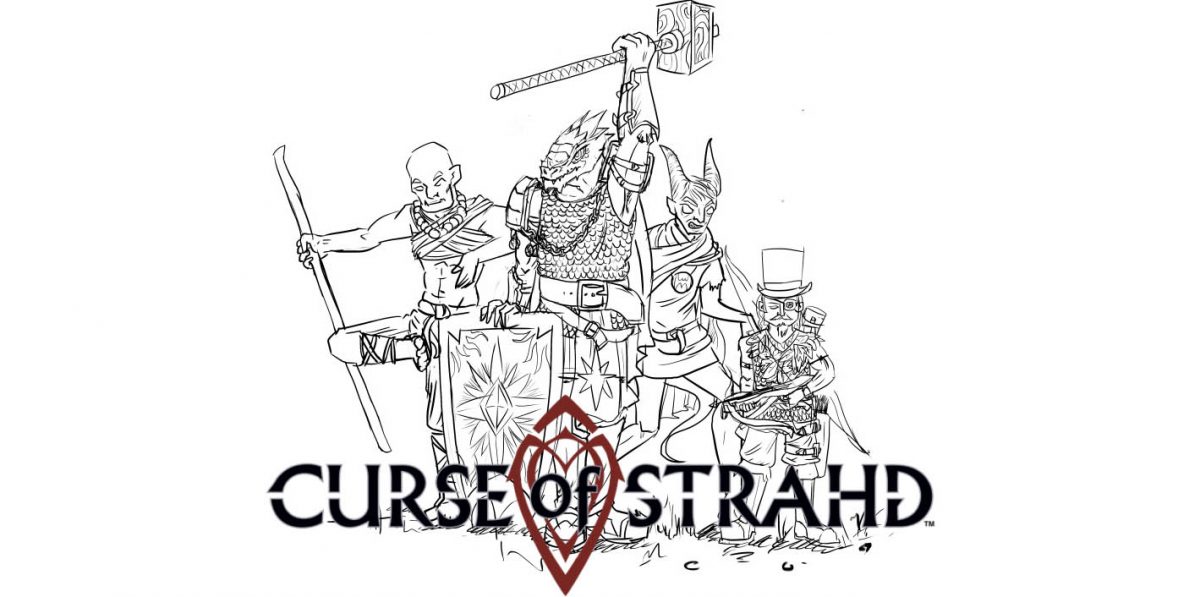Fancy yourself a round of blackjack? Well, if you’re playing with pirates, things are bound to get a little crazy. Keep an eye on your doubloons—let’s play Pirate 21.
What Is Pirate 21?
Pirate 21 is a blackjack-inspired game for 2 to 6 players, ages 14 and up, and takes about 15 minutes to play. It’s published by Indie Boards & Cards and is available now in stores and from Amazon for about $15. Although the box recommends 14 and up, I think it’s fine for younger kids, too; the rules are a bit more complex than blackjack but there’s nothing thematically inappropriate for younger players.

Pirate 21 Components
- 29 Game cards:
- 1 Black Spot
- 6 Captains
- 6 First Mates
- 6 Pirates
- 6 Gunners
- 2 Princesses
- 2 Kings
- 6 Player Aid cards
- 24 coins
Pirate 21 is primarily a card game, and comes in a small two-piece box about the size of two decks of poker cards. The cards are slightly larger than poker cards, showcasing the artwork without going up to tarot size cards. The coins are small cardboard tokens that look like doubloons, complete with irregular edges.
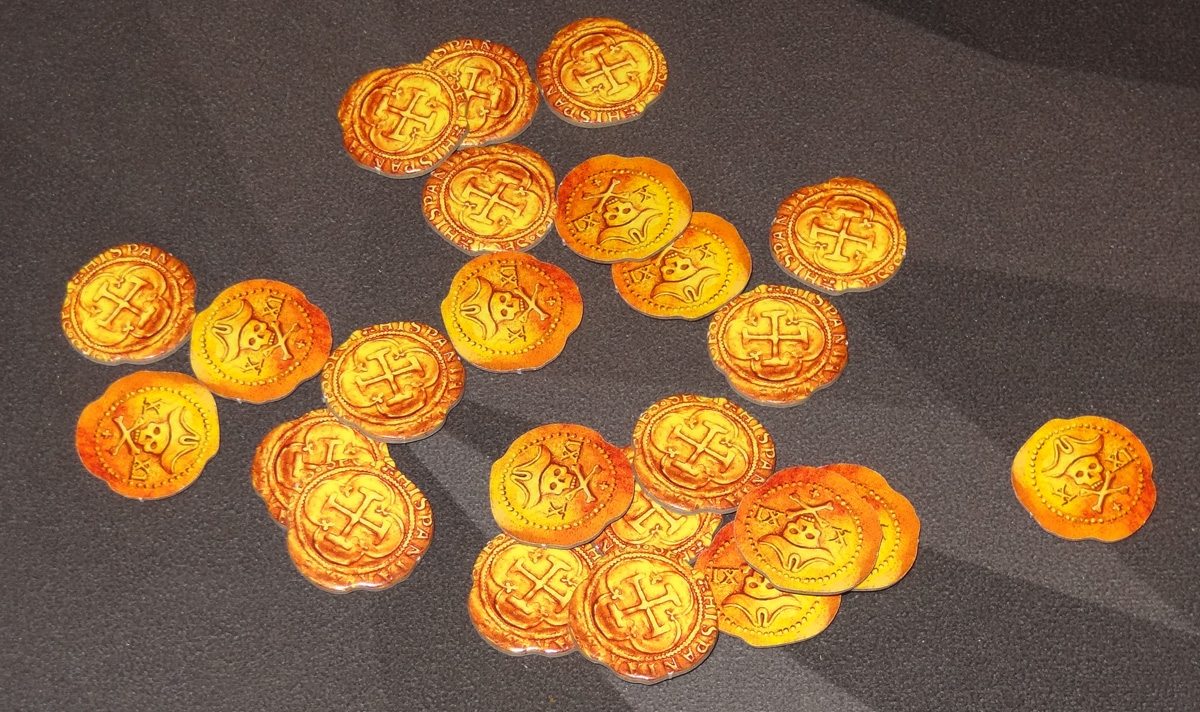
The artwork on the cards is good, though not especially remarkable. The characters look mostly as you’d expect, for the most part: a pirate with a bushy beard and a cutlass, a captain wearing a blue coat and bicorne. The surprise, perhaps, is the princess, who is not wearing a frilly dress but instead sports a long velvet coat and a sword.
The cards themselves have a little information on them: a number in the top left corner, and a name and ability at the bottom below the illustration. The text on the cards (and the rulesheet) is a little small, so if you use reading glasses you’ll want to get those out. The player aid cards have a gameplay reminder on one side, and a list of the cards on the other. This is particularly important because the characters and numbers overlap. For instance, there are captains with values 2, 4, and 6, but the gunners are 4, 6, and 8.
Overall, the components are fine: nothing especially exciting but exactly what you need to play the game.
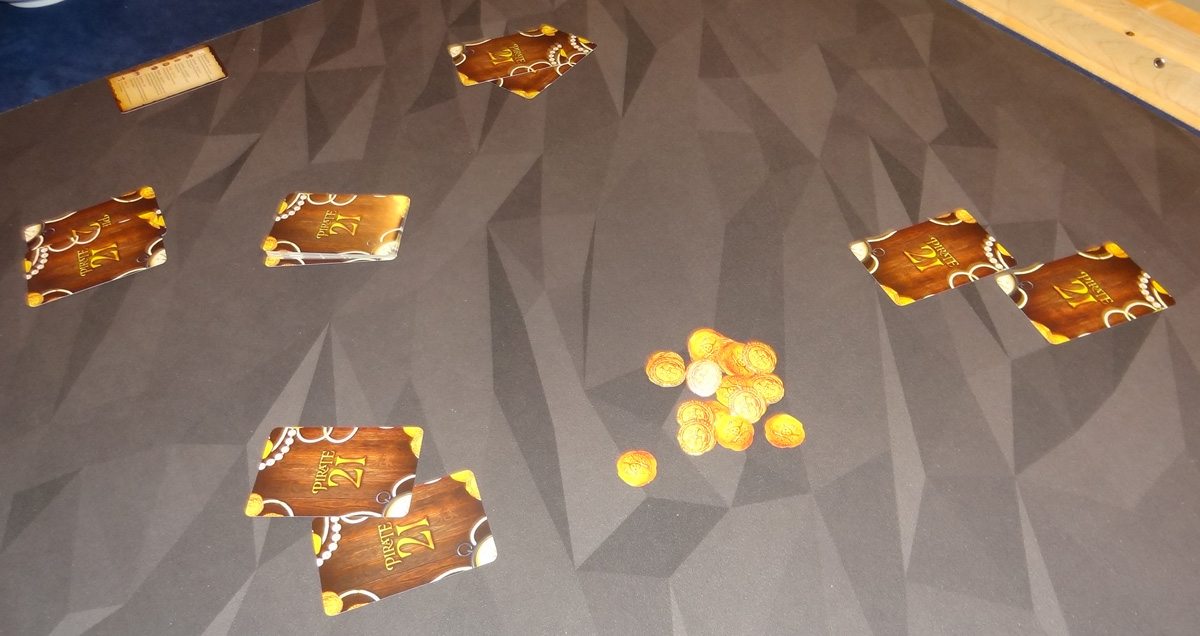
How to Play Pirate 21
You can download a copy of the rulebook here.
The Goal
The goal of the game is to be the first to collect 4 coins, though you can also win using the King’s ability.
Setup
Place the coins in the center as a bank. Shuffle all the cards and deal 2 to each player. Each player looks at their cards and chooses one to place face-up and one to place face-down in front of them. The rest of the deck is set in the center with the bank of coins.

Gameplay
The game is played in a series of rounds, with players taking turns in turn order. On your turn, you must do one of the following actions:
- Draw: Draw the top card and place it face-up in front of you.
- Use Ability: Use the ability of any of your cards (face-up or face-down). Note that you do not reveal face-down cards when using their abilities, but you may not lie about what you have.
- Pass: Do nothing and pass to the next player.
- Knock: You may not knock on your first turn in a round. Knocking declares the end of the round—each player will get one more turn, including you, and then the round ends. If the deck is empty, you must knock on your turn, but then you reshuffle the discard pile and take another action.
At the end of the round (after the player who knocked gets their last turn), all players reveal their cards. The player who has the highest total without going over 21 wins the round and gets 1 coin from the bank. If there’s a tie, all tied players get 1 coin each.
If you knocked, and you are the only winner of the round, you get 1 bonus coin.
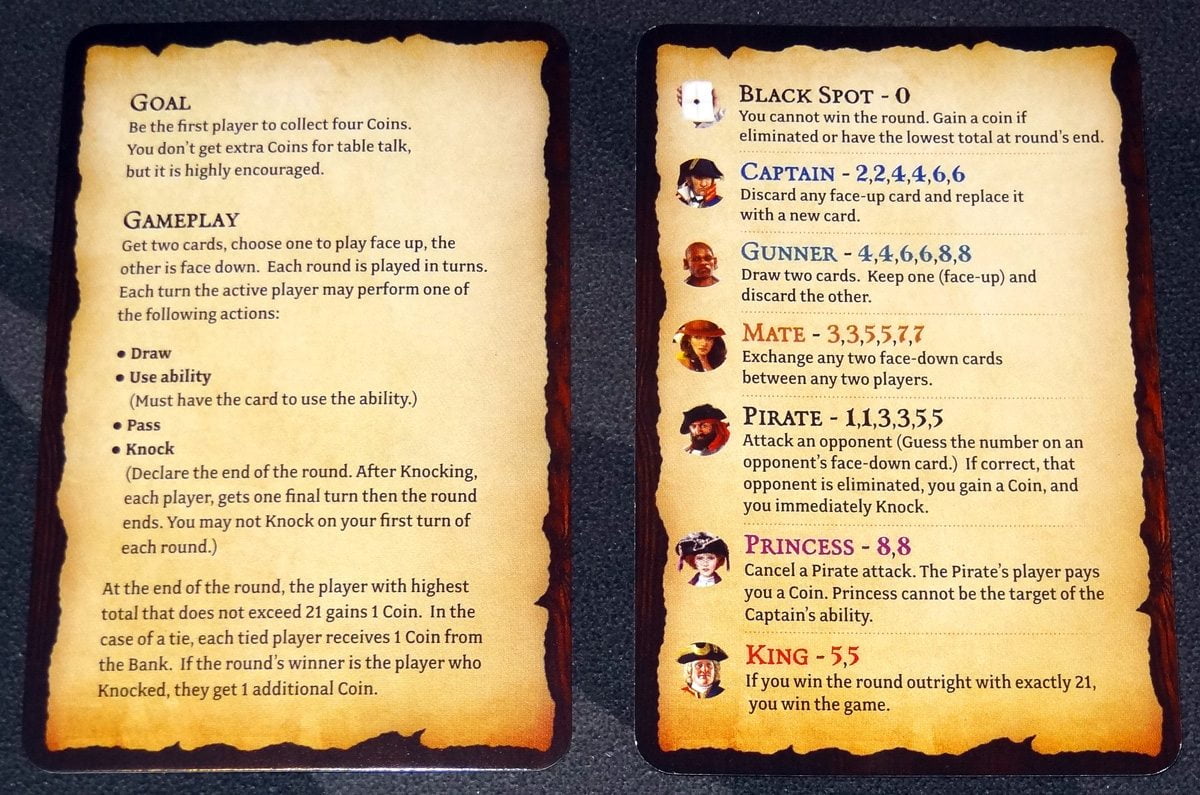
Character Powers
Each of the characters has its own special ability:
- Black Spot: You cannot win the round; gain a coin if you’re eliminated or if you have the lowest total at the end of the round.
- Captain: Discard any face-up card (except a princess) and replace it with a new card from the deck.
- Gunner: Draw 2 cards; keep one face-up and discard the other.
- Mate: Exchange any two face-down cards between any two players.
- Pirate: Guess the number (not the character) on an opponent’s face-down card. That player must respond truthfully: if you are correct, you get a coin from the bank, the opponent is eliminated, and you knock immediately (even if it is your first turn of the round).
- Princess: You are immune to the captain’s ability, and if you are targeted by a pirate, you cancel the attack (including the knock) and the pirate player pays you a coin.
- King: If you win the round alone with exactly 21, you win the game.
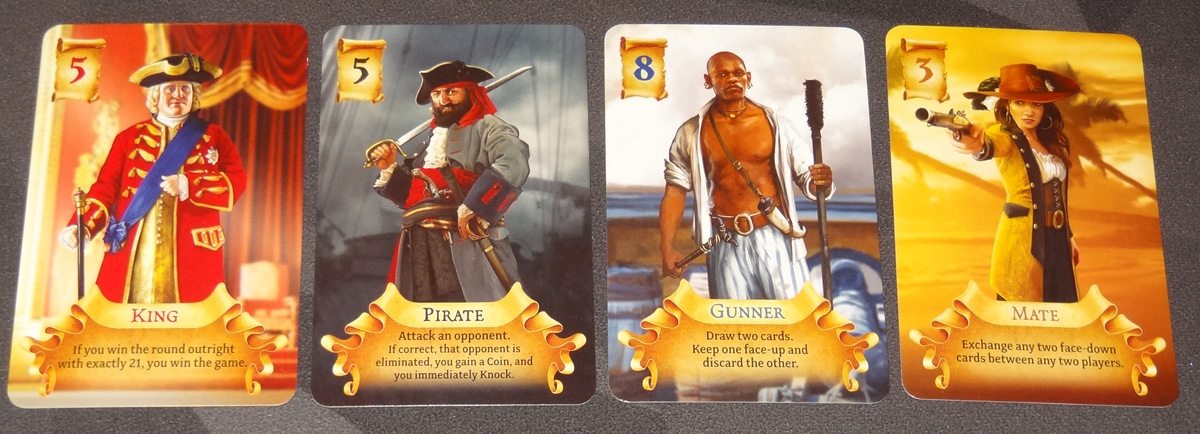
Game End
The game ends if a player has at least 4 coins and more coins than anyone else. If there’s a tie, play continues until one player has the most coins and wins the game.
The game can also end using the king’s ability—you win the entire game, regardless of the number of coins.
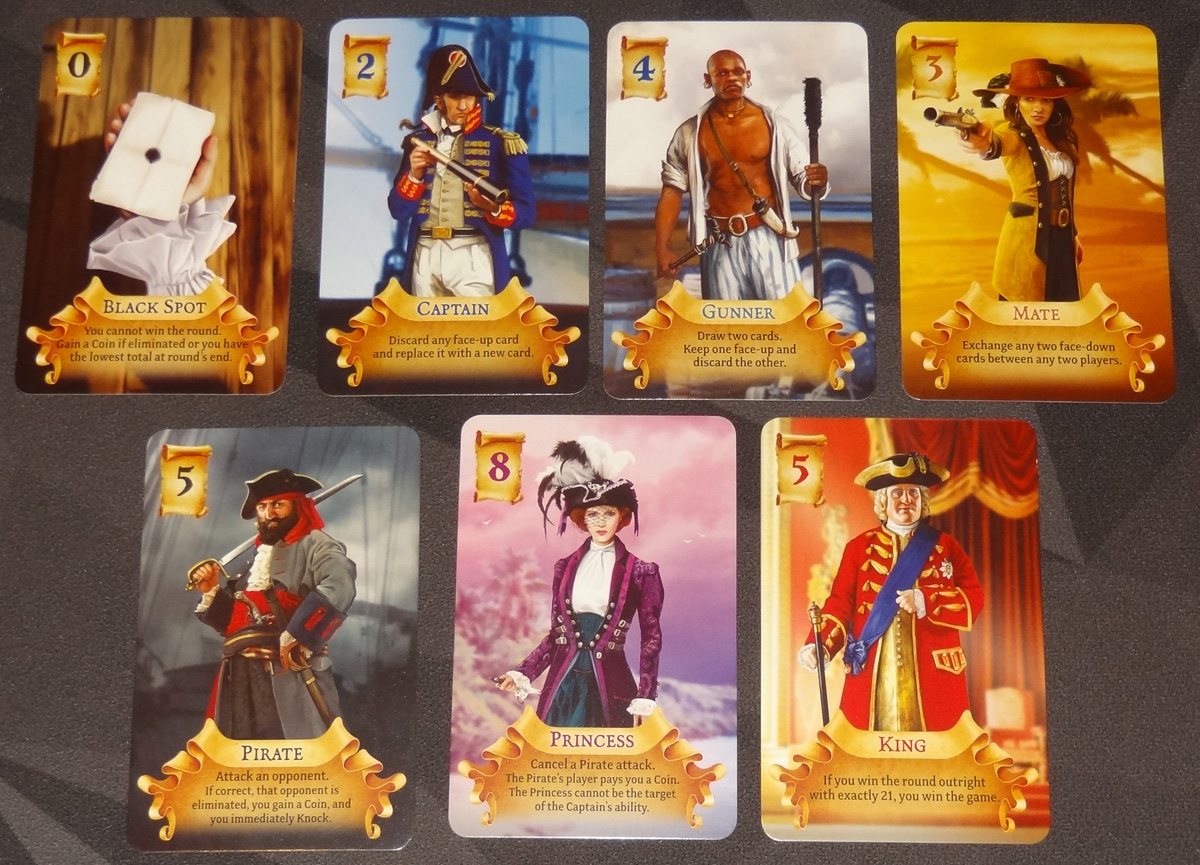
Why You Should Play Pirate 21
Pirate 21 is an interesting twist on blackjack that also feels a little bit like Love Letter: there’s some bluffing, and trying to figure out what cards other players have.
It’s a fairly quick game, which is appropriate given its inspiration, though it can go longer than 15 minutes just depending on who wins each round. 4 coins can seem like an easy goal, but if the rounds don’t end in ties and different players are winning each time, it can take several more rounds before somebody finally hits the goal. That becomes particularly difficult if opponents are successful in stealing coins from the leader.
I like the way that the various abilities tweak the original goal of blackjack. You’re still trying to be the closest to 21 without going over, but you might get eliminated or swap cards, and money can change hands even in the middle of a round. It can turn reaching 21 into a secondary target, because the ultimate goal is getting 4 coins.

For instance, if you have a black spot and a low card, you might want to knock, because you win a coin if you have the lowest card at the end of the round or if you get eliminated. Or, if you have a mate, maybe you try to swap out your black spot with somebody else, to ruin their chances of winning the round. Of course, you have to be careful when swapping cards with another player because then they know what you have.
As with a game like Love Letter, knowing somebody else’s hidden card can be quite powerful because it gives you the opportunity to eliminate the player, or you may be able to swap cards to get yourself in a better position. Unlike Love Letter, though, there are overlaps in the numbers and characters. So if you determine that somebody doesn’t have a “2” hidden, it doesn’t eliminate the possibility that they have a captain card.
The one thing that sometimes confuses players at first is the fact that you can use your hidden card’s ability without revealing the card, but it’s not a bluffing game. You don’t get to pretend you have a hidden gunner if you don’t really—so players still must be honest. The reason, though, is that you can give information about what card ability you have without revealing what number you have. With only 29 cards in the deck, though, there can be some deduction as well as more and more cards are played face-up or discarded.
Since you only get one action per turn, you often have to make a tough choice between using one of your abilities or getting yourself closer to 21. Unlike regular blackjack, you don’t bust automatically if you exceed 21 because you may still be able to use your abilities to get back below 21 before the round ends.
In short, Pirate 21 is a fun twist on blackjack, with some fun powers added. If you like small card games like Love Letter (and pirates), it’s worth checking out!
Click here to see all our tabletop game reviews.
If you’d like to stay up-to-date with all of our tabletop gaming coverage, please copy this link and add it to your RSS reader.
Disclosure: GeekDad received a copy of this game for review purposes.






